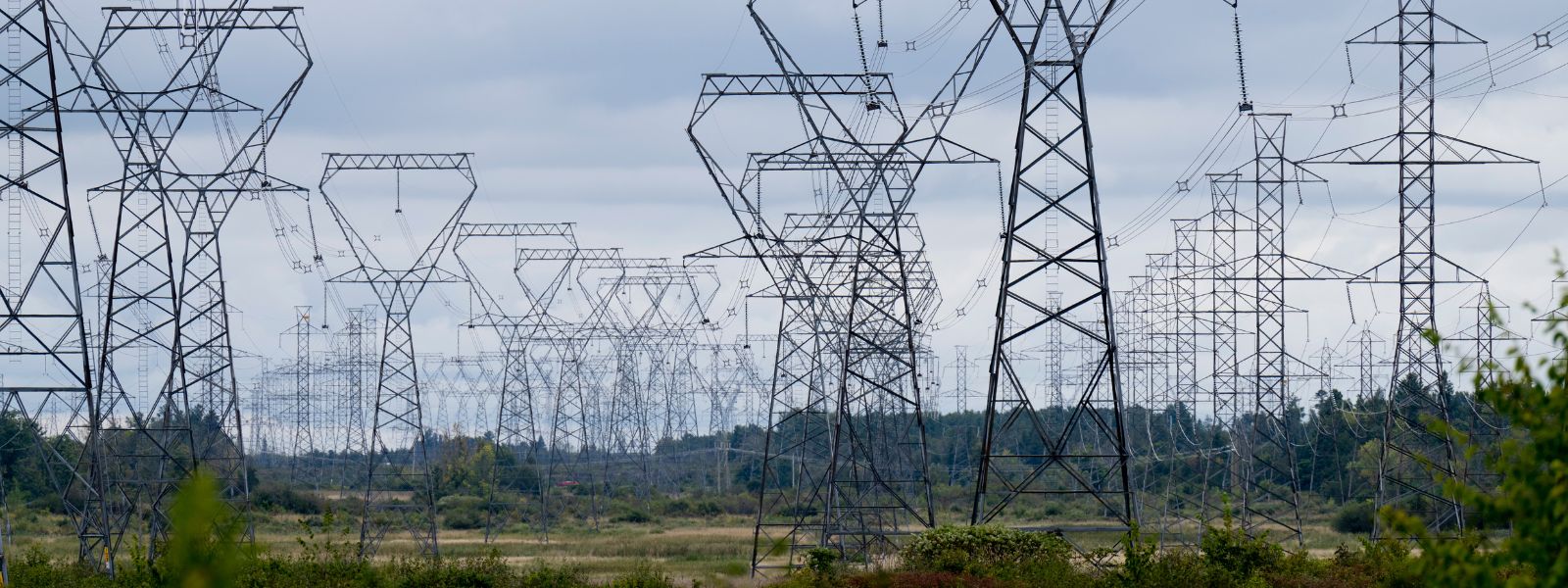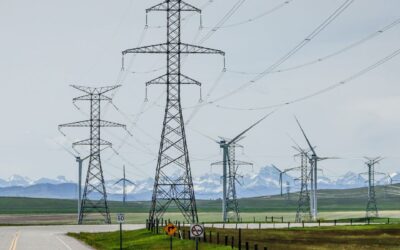Canada is hungrier than ever for electricity, as the country races to attract data centres and electrify industry. But if that burgeoning demand is met by fossil fuels instead of non-emitting sources like hydro, wind and solar, provinces risk erasing years of progress and ceding the competitive advantage of access to clean energy.
This fall, the federal government reaffirmed the place of its Clean Electricity Regulations (CER) within its Climate Competitiveness Strategy. But the regulations face ongoing challenges, including legal action by the Alberta government. Recent provincial rollbacks of other electricity policies, such as Saskatchewan’s decision to extend the life of coal plants, create more fissures in policy confidence. At a crucial time for Canada’s electricity systems, a stable CER offers valuable policy certainty.
A bigger, faster build-out of the grid depends on a stable policy foundation. Federal policy can act as structural reinforcement, protecting against cracks of uncertainty and reassuring utilities and utility regulators that the future of clean electricity in Canada is on solid ground. That includes standing firm on the Clean Electricity Regulations, and holding a high standard for provincial proposals for equivalency.
The stakes are high. Utilities and electricity system planners across the country are preparing for a period of steep demand growth and expansion of generating capacity. New sources of demand are forcing revisions to demand projections sharply upward. Building more electricity capacity is unavoidable.
What gets built now to meet new demand will be in place for decades to come, setting the stage for current and future decarbonization efforts across the economy.
Clean Electricity Regulations complement industrial carbon pricing
The CER will bolster the effect of other policy initiatives across multiple orders of government to build a cleaner electricity grid.
Industrial carbon pricing, for example, applies to electricity facilities that burn fossil fuels, such as gas-fired power plants. These systems incentivize cleaner electricity generation, but limited long-term certainty—particularly in light of recent decisions that erode the effectiveness of provincial systems—make complementary policies like the CER more important.
It’s an approach with a proven record of success. Alberta’s coal phase-out arrived well ahead of schedule owing to private investment in lower-emitting technologies that was facilitated by the layering of mutually-reinforcing policies. In that particular case, industrial carbon pricing, renewable energy supports, provincial coal phase-out commitments, and the federal coal phase-out regulations all contributed to the end goal. The transition lasted through major political transitions in Alberta and Canada, thanks to the layering of policy certainty.
In the same vein, industrial carbon pricing, the CER, and Investment Tax Credits (ITCs) can be mutually reinforcing.
Incentives like ITCs can make clean options more cost-competitive, but they may not be sufficient on their own in the case of large capital investments, especially when the shifting sands of political uncertainty come into play. The CER offers a deeper layer of long-term clarity around the policy outcome. With rules that run well past 2030, it works in concert with carbon pricing and ITCs to attract large-scale investments in the most efficient emissions reduction options, all with the lowest cost of capital. The policy layering builds certainty.
Stable clean electricity policy reassures risk-averse utilities and regulators
Part of the reason that CER is integral to securing a cleaner grid is due to the unique business environment of utilities.
Climbing demand for clean electricity, alongside cratering prices for wind and solar, is pushing utilities to procure more clean capacity and transition away from fossil fuel sources. But doing the hard work of decarbonizing electricity generation will take more investment, deployed faster.
Absent reinforcing policy signals, market trends alone may not be strong enough to secure a cleaner grid.
That’s in part because transformation of the electricity sector is highly capital-intensive. It requires building gigawatts worth of new clean electricity generation and storage, and extensive and expensive investment in the grid, such as new transmission lines. These projects take a long time to plan, build, and pay off.
In the electricity sector, those massive investments must pass muster in a highly regulated business environment. In most jurisdictions, utility regulators oversee all long- and short-term investment plans to ensure that they’re in the best interest of ratepayers. In part because electricity generation is a necessary service—supply must meet demand, and must do so affordably and reliably—these processes tend to be risk averse.
A solid policy foundation provides reassurance, creating clarity and long-term predictability, which in turn informs utility regulators’ decisionmaking. Clearer business cases unmarred by policy uncertainty allow for higher debt-to-equity ratios with cheaper debt and modest equity return expectations, and ultimately lower costs for ratepayers.
Supporting a clean electricity transition where provinces can still lead
Alongside that certainty, the CER also allows for flexibility—essential in a country where the achievable path to clean electricity looks different from coast to coast to coast.
That certainty is achieved by setting clear goals: emission limits for fossil fuel burning electricity generation facilities that start in 2035 and become increasingly strict, eventually reaching zero tonnes of emissions per gigawatt hour in 2050.
But within that framework, the CER includes considerable flexibility. For example, the regulation allows for some emitting generation for the purposes of back up, protecting reliability and supporting affordability. Our analysis has shown that the additional flexibility enables an affordable and pragmatic pathway, even for provincial grids as diverse as Manitoba’s, Saskatchewan’s and Alberta’s.
Furthermore, as a creature of the Canadian Environmental Protection Act, the CER holds the door open to alternative agreements with provinces that would implement legal provisions equivalent to the CER. In other words, provinces still have the option to lead with their own approach, a route that has been used for oil and gas methane regulations and for previous electricity regulations (including in Alberta and Saskatchewan).
The federal government has signaled its openness to negotiating equivalency on the CER. Last month’s budget proposed extending the timeframe of equivalency agreements beyond the current limit of five years.
The result is a CER that builds on the big steps already taken across Canada toward clean electricity, and bolsters further efforts. While it sets the blueprint for Canada’s electricity future, the regulation ultimately leaves the details—such as electricity planning and resource choices—up to the provinces.
Policies like the CER improve Canada’s chances to get back on track to meet overall emissions targets. Meaningful mid-term milestones for emission reduction also create reassurance for electrifying industries that Canada’s grid will keep getting cleaner.
To date, the electricity sector is Canada’s biggest emission reduction success story. But absent a strong federal standard, uneven provincial action, and insufficient direction for electricity regulators risk reversing hard-earned emissions progress from coal-fired power phase-outs.
Doubling down on policies that lay a solid foundation for the clean electricity transition will pay off in growing low-carbon industries, increasing affordability for ratepayers, and deepening emission reductions. Policy efforts across the economy, including shoring up industrial carbon pricing systems, still lean on a stable CER. Keeping that policy in place is an important move to accelerate the transition to cleaner electricity across the country.








